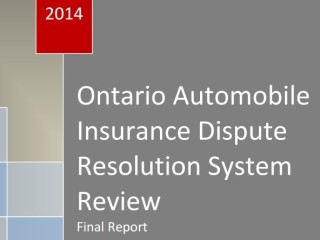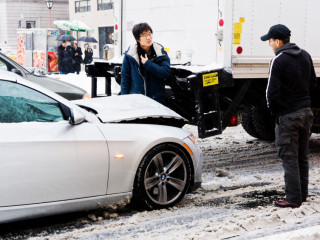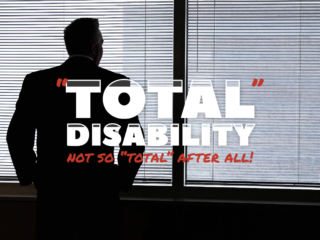Plaintiff’s Appeal From Unsuccessful Motion To Add Defendants 6 Years After Collision Statute-Barred: A Review Of Limitation Periods
Released September 30, 2016 | Full Decision [CanLII]
The Plaintiff suffered injuries in a 2009 collision while crossing the street at a crosswalk. Her previous lawyer hired an engineer, an accident reconstruction expert, to provide an opinion as to the cause of the crash. The engineer attended at the scene of the crash and determined the driver’s speed caused the crash. Following that opinion, the Plaintiff sued the driver in December 2010. The action was set to go to trial in September 2015.
In the meantime, the Plaintiff hired a new lawyer, who determined it was “obvious” to him that the design and safety features (or lack thereof) at the crosswalk were contributing factors to the 2009 crash. As such, the Plaintiff moved to add the Respondents, the City of Kitchener and Regional Municipality of Waterloo, as Defendants. That motion was dismissed, and the Plaintiff appealed that decision.
On appeal, the Court of Appeal reviewed s. 21 of the Limitations Act, noting “clear expiration of a limitation period is an absolute bar to the addition of a party to an already existing action”. Further: “Subject to the statutory exceptions from the general rule, none of which are at issue in this case, that bar arises immediately after the second anniversary of the day the claim was discovered”.
The Court of Appeal then set out Section 5 of the Limitations Act, which states:
- (1) A claim is discovered on the earlier of, (a) the day on which the person with the claim first knew, (i) that the injury, loss or damage had occurred, (ii) that the injury, loss or damage was caused by or contributed to by an act or omission, (iii) that the act or omission was that of the person against whom the claim is made, and (iv) that, having regard to the nature of the injury, loss or damage, a proceeding would be an appropriate means to seek to remedy it; and (b) the day on which a reasonable person with the abilities and in the circumstances of the person with the claim first ought to have known of the matters referred to in clause (a).
Presumption
(2) A person with a claim shall be presumed to have known of the matters referred to in clause (1) (a) on the day the act or omission on which the claim is based took place, unless the contrary is proved.
The Court of Appeal noted that when the person first ought to have known of the matters described in clause 5(1)(a) is a question of fact.
Regarding the evidence required on such a motion, the Court of Appeal noted “the motion judge is entitled to assess the record to determine whether, as a question of fact, there is a reasonable explanation on proper evidence as to why she could not have discovered the claim through the exercise of reasonable diligence”. Further: “If the Plaintiff does not raise any credibility issue or issue of fact that would merit consideration on a summary judgment motion or at trial and there is no reasonable explanation on the evidence as to why the Plaintiff could not have discovered the claim through the exercise of reasonable diligence, the motion judge may deny the Plaintiff’s motion.”
On appeal, Plaintiff’s counsel submitted it was “obvious” to him there were design and safety features (or lack thereof) with the crosswalk that contributed to the crash, but that the issue was so complex it was not obvious to the engineer retained by the original lawyer. In denying the appeal, the Court of Appeal noted there was a lack of evidence put forward by the Plaintiff in support of this claim, such as from the engineer explaining why the issue was not clear to him. Quoting from The Law of Civil Procedure in Ontario, the Court noted:
It is incumbent upon the Plaintiff to lead some evidence of the steps he or she took to ascertain the identity of the responsible party and provide some explanation as to why the information was not obtainable with due diligence before the expiry of the limitations period.
The Court also rejected the argument that the act of retaining an engineer was sufficient to discharge the due diligence responsibility and postpone the limitation period indefinitely.
The Court also made some comments in obiter, suggesting a potential reinterpretation of Pepper v. Zellers Inc. (2006), 83 O.R. (3d) 648 (C.A.) in light of Hryniak v. Mauldin, 2014 SCC 7, [2014] 1 S.C.R. 87. In, particular:
Although a motion to add defendants is not a motion for summary judgment, the goal of “a fair process that results in just adjudication of disputes” that is “proportionate, timely and affordable” is relevant in this context as well. It may well be that this court should interpret Pepper in light of Hryniak and re-evaluate the suggestion that Pepper sets a strong default rule in favour of committing the issue of discoverability to trial.
Finally, the Court noted the motion judge did not err by not considering the full extent of the Plaintiff’s injuries in assessing discoverability. It was clear that, at the time she commenced the lawsuit, she understood she had damages warranting a lawsuit, and that her injuries did not impair her ability to appreciate the matters referred to in s.5(1)(a). The fact she later discovered her injuries were more extensive did not extend the limitation period against the Respondents.
Read the full decision on CanLII












